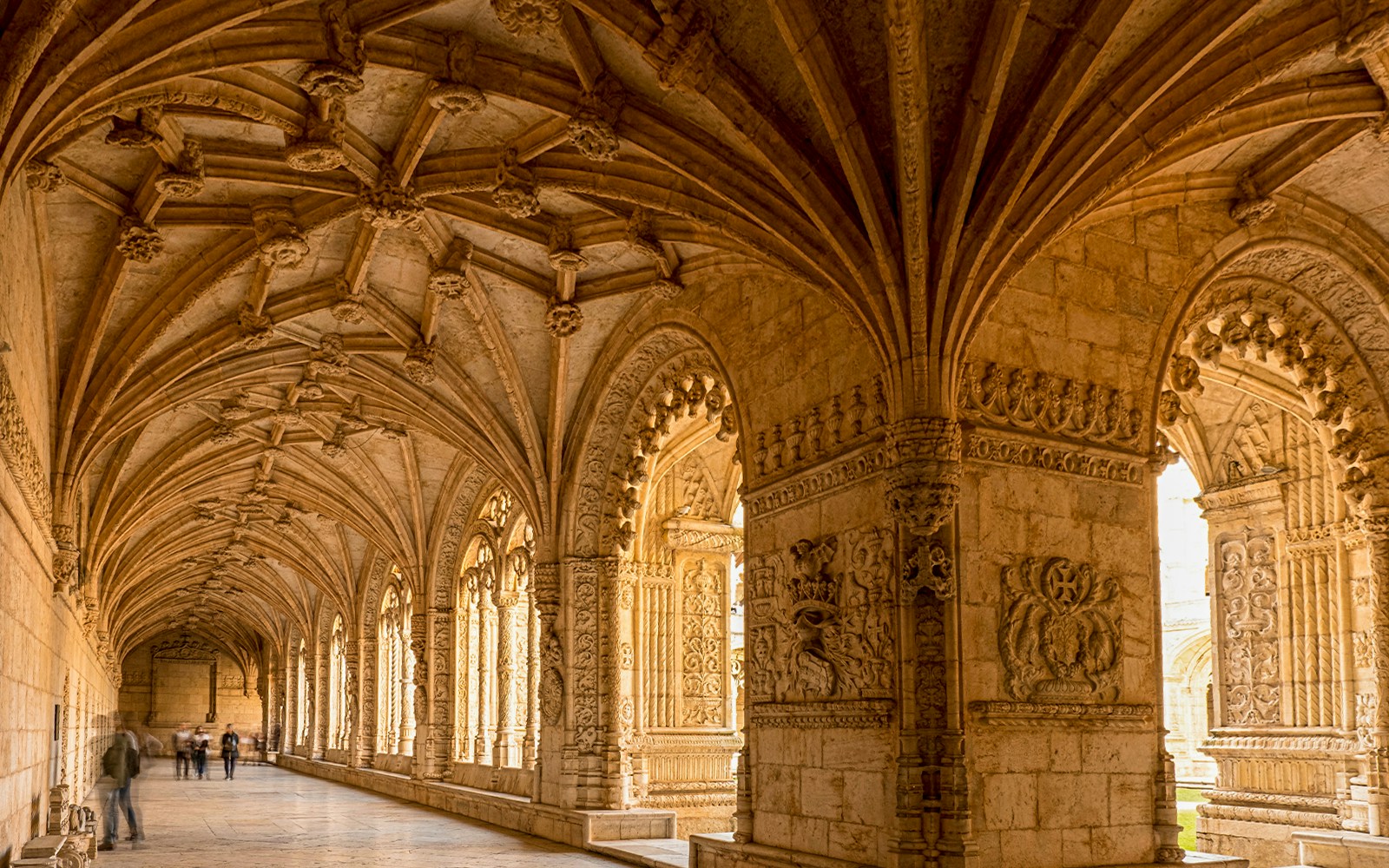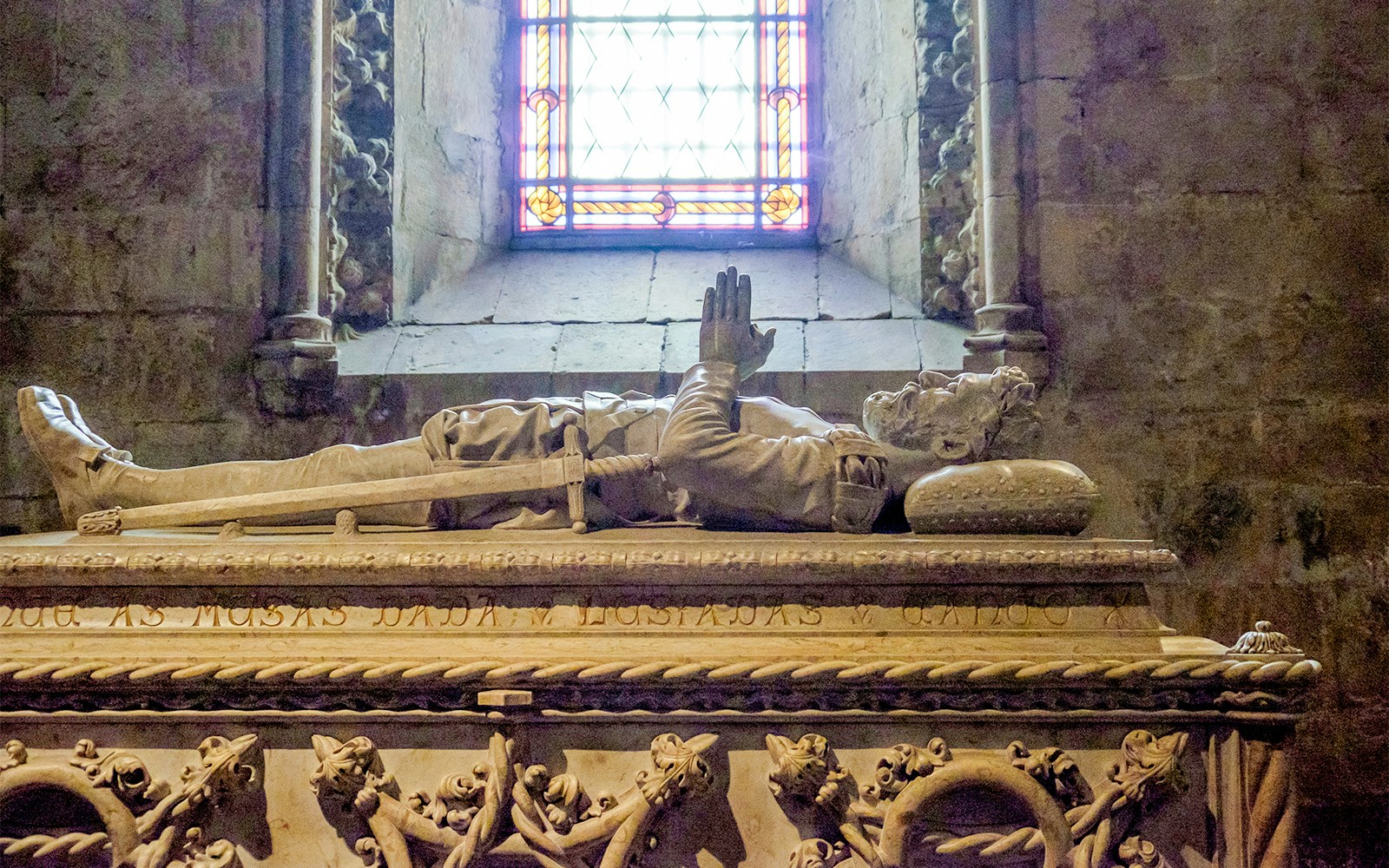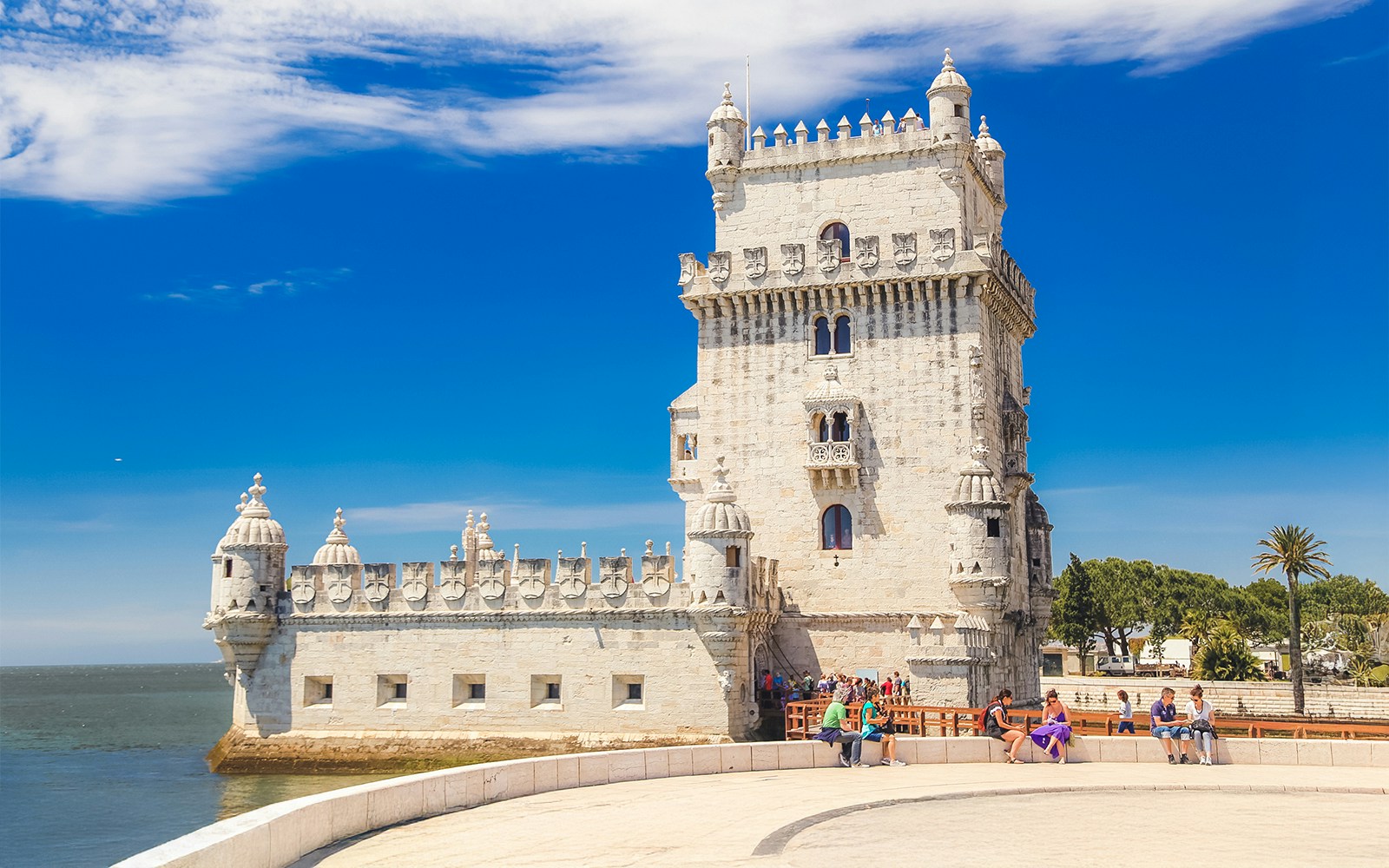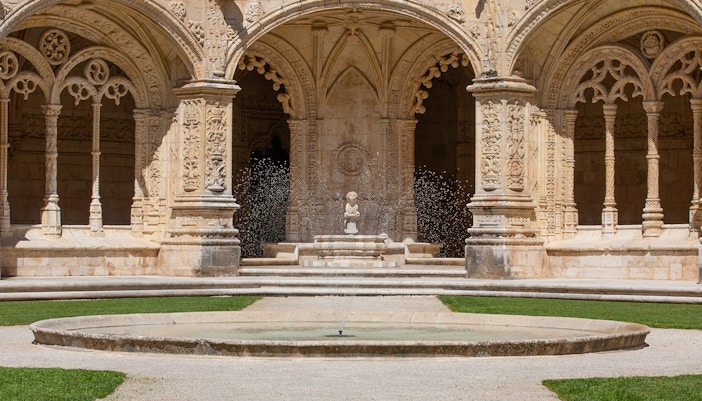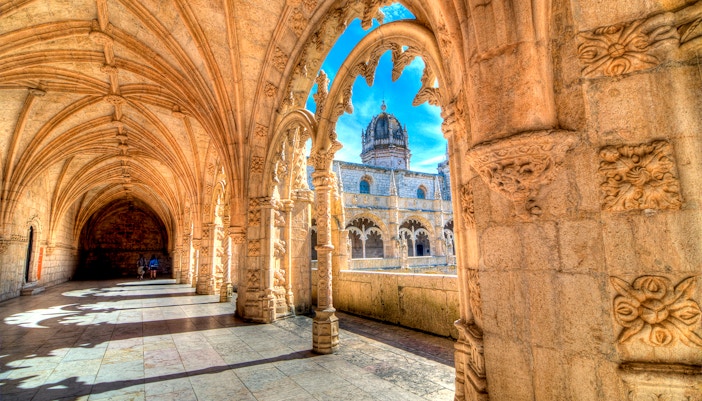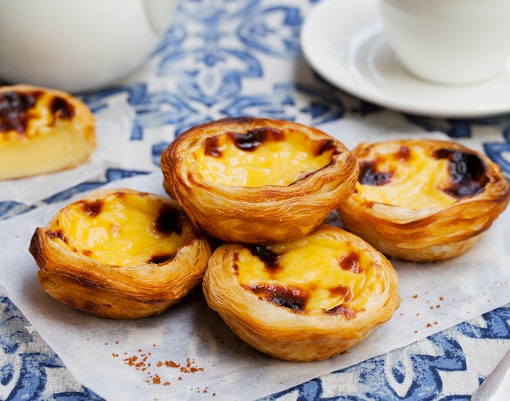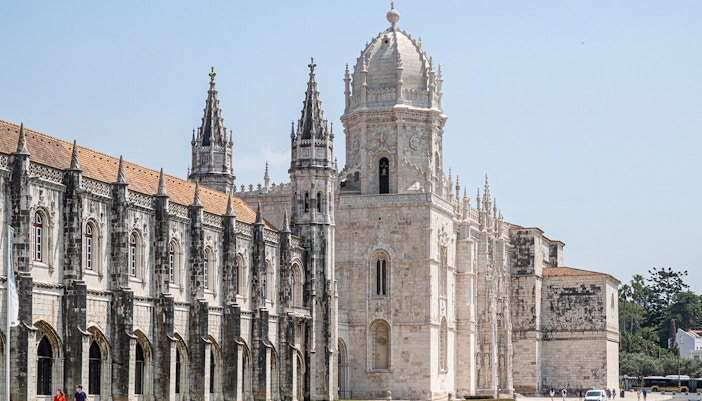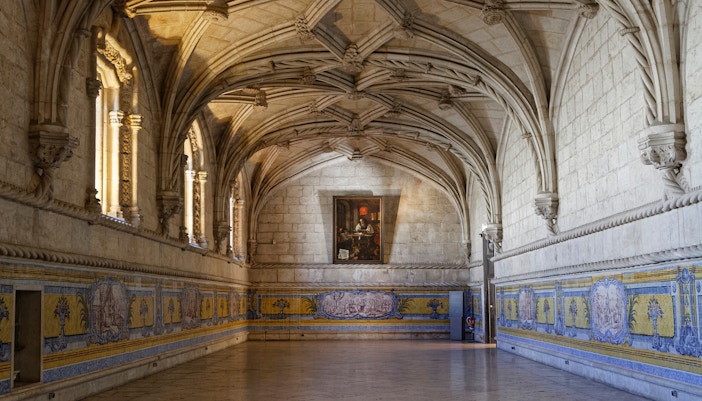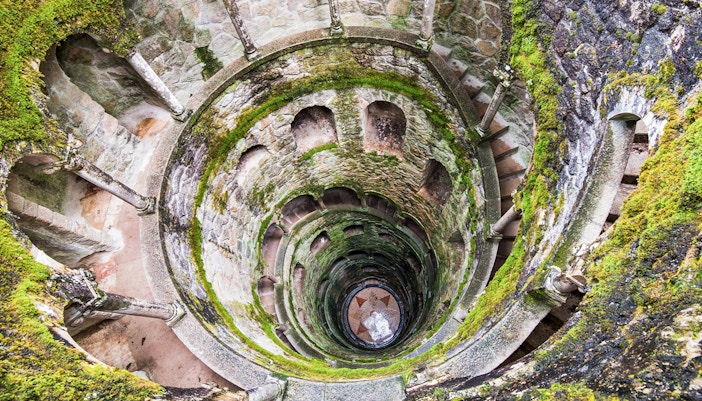The Jerónimos Monastery in Lisbon, Portugal, is a stunning example of Manueline architecture, a style that developed in Portugal during the reign of King Manuel I. The monastery's facade is a masterpiece of intricate carvings, featuring symbols of the sea and the discoveries made by Portuguese explorers. The church's interior is equally impressive, with its soaring vaulted ceilings and ornate altarpieces.
The cloisters are a highlight of the monastery, featuring arches and columns adorned with carvings of exotic animals and sea monsters. The overall design of the monastery blends Gothic elements with Manueline decorative motifs, creating a unique and stunning example of Portuguese architecture.


